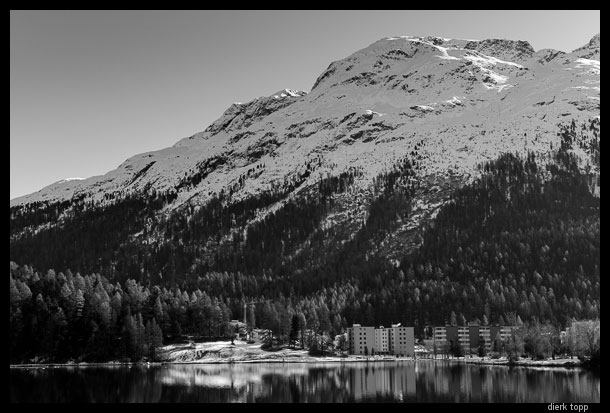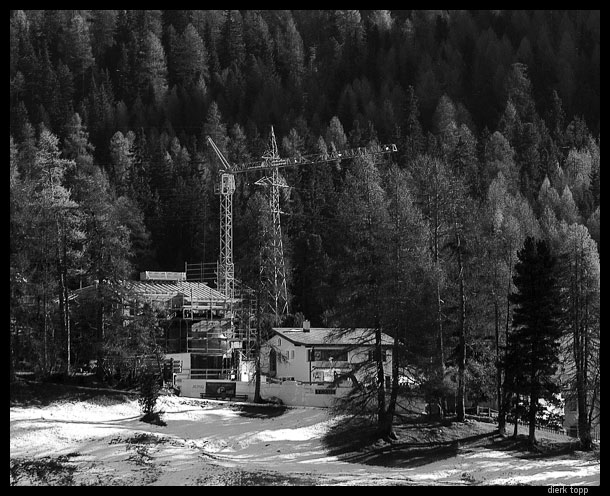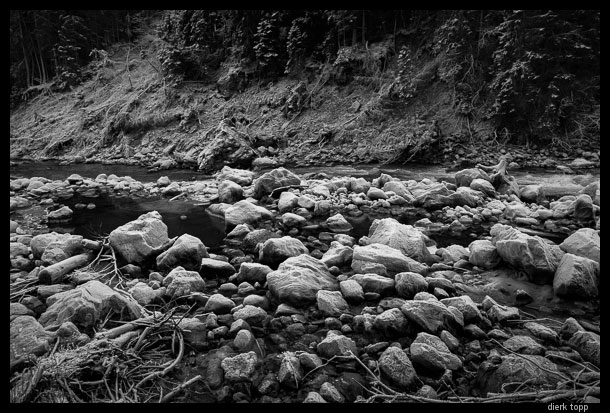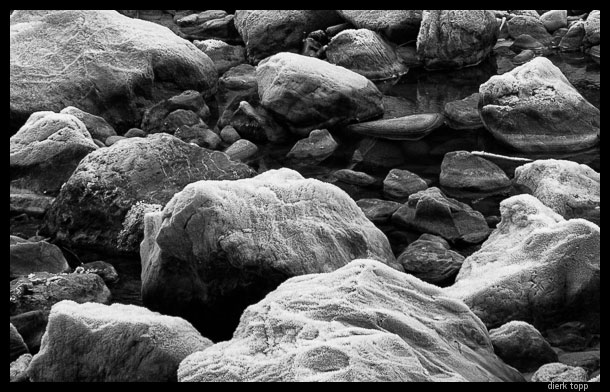Was a bit hesitant at first when receiving an M Monochrom from Leica — nah, just for a week. Who hasn’t yet read all the hands-on reviews praising the magic of this black-and-white only camera, consistently stating phenomenal image quality — while at the same time emphasizing that the camera really truly starts shining when files are adjusted and post-processed. Call me lazy, but is that what the old masters of black-and-white photography did as well? Spending hours and hours in the darkroom to fine-tune single captures? So I went the other way.
(Update: Reader and contributor Dierk Topp was so kind to provide the exceptions that prove the rule! His post-processed image samples are added at the end of the post.)
The M Monochrom, a bold statement by Leica, is a custom-tailored niche tool catering for the until now not-yet-met needs of many of Leica’s most loyal devotees — photographers who mostly prefer to shoot black and white. When you kept on reading the user reports, however, one got the impression that the M Monochrom’s output depends largely on heavy post-processing and the use of filters.
What a revelation it therefore was to shoot the M and immediately discover that, for my humble needs, not the slightest interference with the files straight out of the camera was required. BTW, all images here are straight out of the camera without any sharpening, contrast adjustment or anything. (Click the images for full resolution. Last two photos are downloadable as DNG files.)
To Post-Process or Not
To me, spending much time on the black-and-white files would defeat the purpose of the M Monochrom in the first place. What’s more back to the roots and the essentials of photography than a camera stripped of color and all the bells and whistles; stripped of all the “convenience” functions that seem to be imperative for digital photography. An M Monochrom implies, at least to me, to also refrain as much as possible from post-interference.
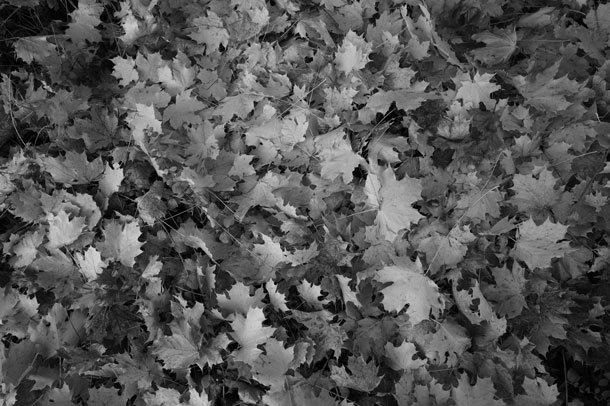
The old masters never needed a better LCD screen. A photo was a photo. Period. And this is what the M Monochrom’s approach is all about: minimalism, combined with utmost reliability to deliver. Not to mention the incredibly sexy black-only body.
Here comes a photography tool that’s most contentedly stuck in the past, referring to the days when the only method of post-processing was the mixing of chemicals in the darkroom and the choice and size of paper.
Sure, why would anyone deny the comforts and achievements of current technology, offering a myriad of possibilities to recover shadows, blacken blacks, sharpen details and make bothersome annoyances disappear altogether by the click of a few buttons. Right, it’s a photoshopped world…
The Antagonism M
The M Monochrom, however, is an antagonism that can most self-confidently renounce these achievements of modern-day imaging processing.
What’s written herein, therefore, might sound like heretical sacrilege to many. Contrary to the usual dedicated tweaking of DNG files, I trust the M’s JPEGs straight out of the camera, which is a real relief as I prefer not to spend too much time in front of a monitor. I suspect most of you will instinctively reject this approach. It’s all straight out of the camera:

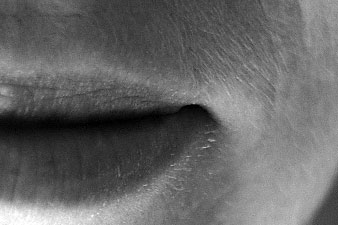
In general, the best black-and-white images are the result of a tonal response that is perfectly matched to the subject, usually as the result of extensive darkroom or post-processing work. Consider the M Monochrom itself, however, to be the imager, darkroom and post-processor in one. The M indeed allows this completely effortless all-in-one approach.
I consider myself to be a pragmatic, no-nonsense shooter who doesn’t want to depend too much on the magic of post-processing. Every post-processing, however insignificant, is always some sort of embellishment, even though every photographic capture is always a subjective rendition.
Surprisingly, contrary to expectations, me agnostic was mostly perfectly satisfied with the image quality straight out of the M.
For good reasons. The M Monochrom is tradition come to life. It’s a time travel standing tall in an overcrowded market trying to sell everything in a thousand variations. The M, however, is like a guarded and reserved spectator, not showing off in any way — and thereby offering so much more than meets the eye.
Contrary to many earlier observations shared by others on the Net, I wouldn’t describe M Monochrom JPEG and RAW files as “flat.” It goes without saying that by adding some post-processing images might look even more phenomenal. Whatever format, in regards to dynamic range, tonality and resilience, the files are most forgiving and offer ample leeway.
You’re not getting penalized for slight inattentiveness.
Granted, none of the images here are masterpieces. Contrast should be richer, blacks fatter and tones more distinct, but there’s a smoothness, dreaminess and unfamiliar dimension inherent to these M files that I felt like harming the original captures when adjusting the slightest detail.
The Take-It-Easy Approach
So this is probably the first digital camera that made me keep my fingers off any post-processing. One could use a yellow filter as a balance to bring out skin tones or enhance those skies. After all, aren’t most digital black-and-white photographers after the legendary black-and-white look rendered by film… I saw no need though to alter “what is” into “what could be.” Because that longed for look is right here. So yes, even camera as expensive as the M can warrant a take-it-easy approach. Isn’t that the very purpose of the M Monochrom.
What makes sense, on the other hand, is a good ND filter as the M’s base ISO of 320 is relatively high and maximum shutter relatively slow with 1/4000th of a second, especially when using a Summilux or a Noctilux wide open in bright daylight.
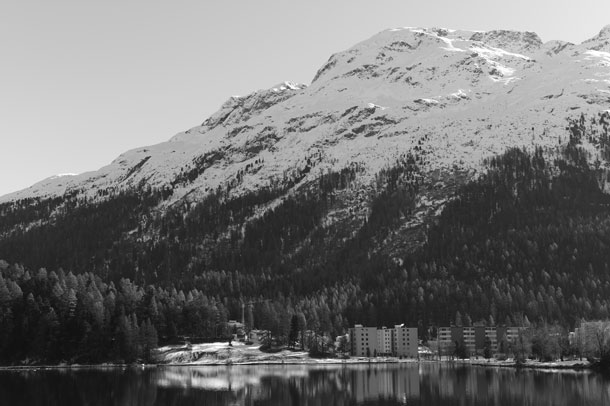
Also, I’m not getting into the ISO debate, because the M makes the debate redundant. Noise is a matter of taste. What’s nice for some may be unacceptable for others. Anyone with only basic photographic experience will quickly get a feel for each camera’s critical ISO threshold. The days of worrying noise, however, are gone. Given the publishing and print sizes most people use, noise has become a thing of the past. The more so with the M Monochrom.
At ISO 3,200 — that only a few years ago was the absolute top sensitivity — you better use a magnifying glass if you absolutely want to detect some noise. The M’s pixel acuity is nothing short of amazing, even at challenging light levels. Somehow you get the impression of seeing distinct pixels.
Borderline ISO? Again, today noise is in most instances a no-brainer. Just clean it up if you care, and that’s the only post-processing I’d apply besides exposure compensation. Nice grain can on the contrary be attractive and add that certain something to an otherwise — who knows — less expressive capture.
The M Monochrom’s ISO goes all the way up to 10,000 — that’s the probably highest sensitivity of a commercial CCD sensor. For emergencies I’d not hesitate to max out ISO at 10,000, but even ISO 5,000 produces keepers without the need to shed a tear over a missed opportunity because you hesitated to use an astronomically high ISO value. Have no fear!
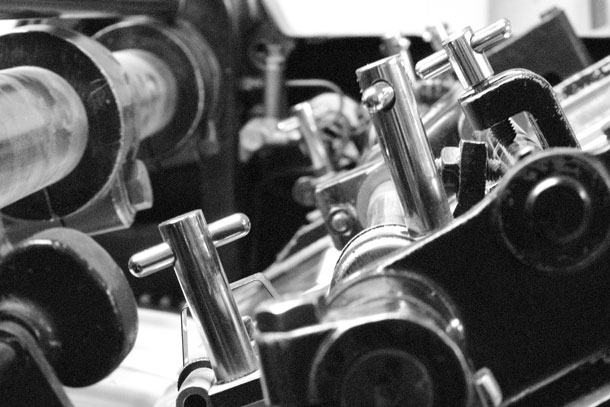
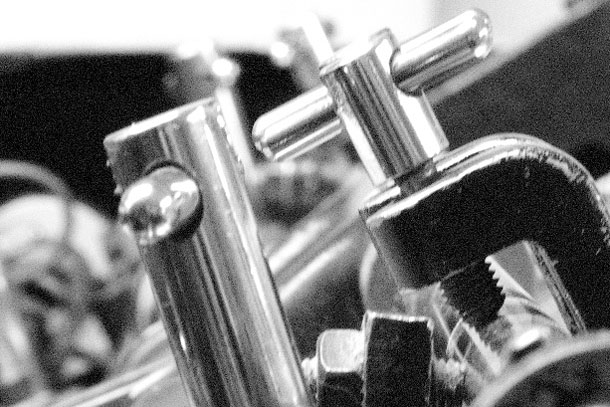
Mind the M’s potential risk to overexpose, but don’t be afraid of underexposure. The camera’s overhauled guts seem to master the challenge:
The M Monochrom’s recovery potential is impressive. Should you ever underexpose, the M allows to easily push the files up to 4 stops without getting into trouble. At base ISO you can easily push the files even 5 stops without any significant loss of IQ. Great for night-time shooting. The M Monochrom stores an amazing amount of data in the shadow areas. How come?
Well the Bayer filter is history, but we’re left guessing whether Leica engineers have kept UV and IR filtration elements in place over the sensor. Difficult to tell from the output.
What’s not difficult to tell, however, is that the M Monochrom omits anything that might distract from the experience of shooting — or from what is not absolutely necessary for outstanding performance. It’s a most direct interaction between subject and object.
For instance, why would you want to adjust white balance. The M has no option. It should, one is tempted to ask, because the camera’s supposed to nail luminance and tonal gradation like no other camera. That’s exactly the point. The M nails luminance, not color.
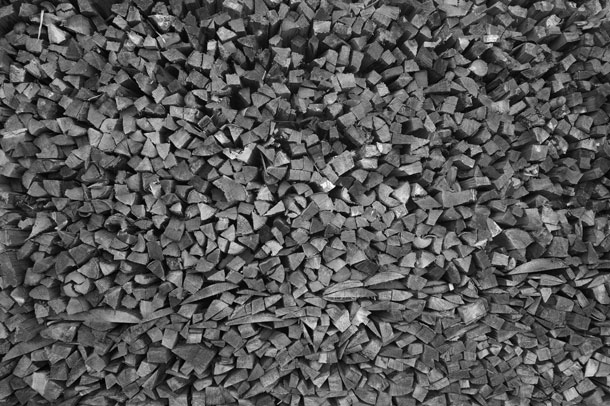
All in all I think the M Monochrom is maybe the most intuitive and reliable camera I’ve ever worked with. As if the camera has a life of its own, emanating a mature, unmistakable serenity that reassures the user, “Trust me, you can rely on me.”
Take the state-of-the-art sensor that’s still CCD and therefore not capable of delivering live view or offering milder power consumption. Old stuff, right. Still, this is a bold invention of a super expensive niche niche specialist product without Leica seeming to be worried the least to risk the loyalty of users.
The M is everything a camera maker should avoid — offer a technically old and hyper expensive camera.
Expensive?
At $7,950 you’re spending a lot on a fraction of the options possible in today’s camera world. Welcome to Leica. And then again, M Monochrom sales are reportedly healthy. The camera is backordered everywhere. Amazing, isn’t it, for a camera that’s based on yesterday’s technology.
It’s a camera that is in no hurry. Slow down. You better learn to accept the M’s character before getting impatient lamenting the slow writing speeds and so forth. Switching on the beauty might show a black LCD screen or the M freezes altogether. In a way it’s a moody performer, pushing the few years old processor to its limits. Add the archaic LCD screen. But why depend on the screen in the first place? Shut it off.
Learn trusting the camera — while developing your own skills. Don’t just shoot. Use this digital M as if you would use a film camera. Film is precious. Leading to the question whether the digital Leica can replace a film camera altogether. It won’t take you much time to figure that one out. There is no reason not to dump film. Period.
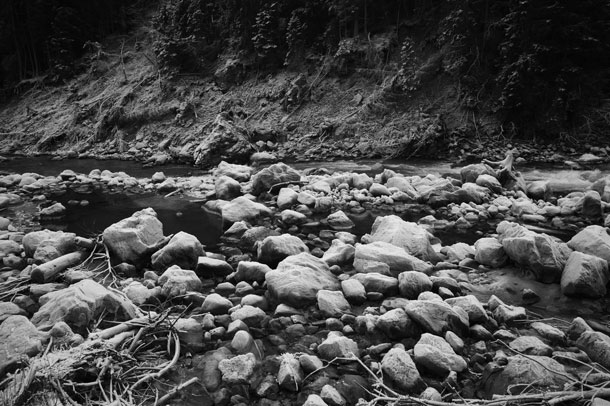
Remember, even when scanning film your digitizing the photographs. Right, you crave for the darkroom experience. I prefer to be out in the open, shooting, instead of spending time in the dark chamber a.k.a. one’s private little “red-light district.”
Also, DNG files contain a massive 34.75MB amount of data, that is: detail. That’s way too much for the small print or average Web publishing, but a godsend for serious usage. A TIFF scan offers about the same amount of data. And boy do large M prints look stellar. So is this the perfect camera?
Bottom Line: Welcome to Authentic Photography
To be honest, the M Monochrom’s unparalleled performance in terms of IQ and ease of use doesn’t make me miss color too much. For the moment. But testing the M while driving through Europe’s Indian Summer with red and yellow forests literally on fire, well, I didn’t feel like reducing this phenomenon to black-and-white only images. Was grabbing another M, the Canon EOS M, a cheapo in comparison. Doesn’t that say something about how all-encompassing the M Monochrom is.
The M is perfection in its very limited field of operation. It’s the tool for an obsession — or for the ones whom money doesn’t matter. It does for me — and I have no problem whatsoever with black-and-white conversions from color files. Also, I’m never printing as large as the M Monochrom’s resolution would allow for.
Honestly, how often do you blow up the images 100% in print? The M Monochrom offers so much more leverage than most of us would ever need — and at the same time the M is stuck in a world that’s robbed of color.
There is no denying that a considerable part of the M Monochrom’s appeal is the brand’s mystique.
One could very well micro-analyze differences between M and other black-and-white files. My guess though is that many would lose a bets on which one is which one. Hardly anyone will be able to tell the difference. But talking about the experience of photography, I can hardly think of a camera that makes this process more enjoyable.
I loved shooting the M Monochrom and miss the camera dangling around the neck, attached to the black saddle leather strap with shoulder section and micro velour inside.
This Leica is more about the experience than the result, or as the winged word goes, “The journey is the destination.” How else is it possible that more capable cameras with many more functions are less desirable.
Furthermore, many of the real keepers among my many thousands of photos are from Leicas (and Carl Zeiss prime glass). That’s what the M produces. Keepers.
This Leica somehow becomes part of the photographer — and vice versa. The camera with its simplicity acts as an extension of one’s self without any distracting buttons and functions and beeps. But then again, that may be part of the Leica mystique. Wouldn’t it be for the glass, and strictly technologically, a Leica camera is no better than any pricey camera.
But there is so much more to especially this M.
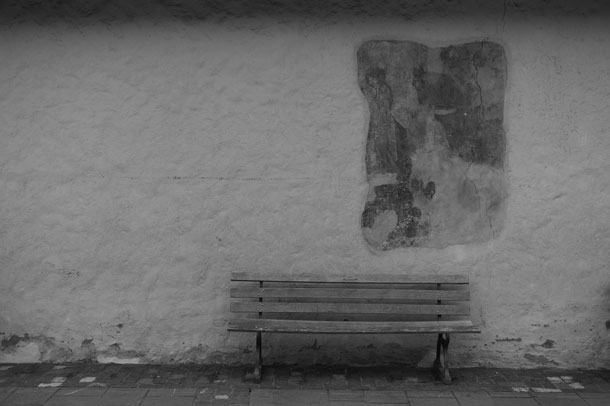
Part of the M Monochrom’s challenge is that it forces you to see differently. Open your eyes. Try to tell luminance apart from color. Even though, the best photographs are hardly the result of a conscious process. They’re rather the combination of many factors, including a photographer’s overall attitude and approach.
The M Monochrom doesn’t guarantee grand images. But you also can’t blame the camera. If this niche tool wouldn’t be so prohibitively expensive, it should be the basic camera every novice should start working with — because the M Monochrom teaches and forces to see.
It’s a classic catch 22. The M is not a camera for beginners. But every beginner should spend some time with it. Good images come from the equipment, but even more so from the eye. And what the eye can’t see the equipment can’t deliver. The M is like a third eye.
Still, you don’t purchase a Leica to take better pictures any more than you buy a Rolex to get a better record of time. Even worse, unaccustomed to the rangefinder so slow you might miss out on great images. Again, the journey is the destination.
Sadly though this niche luxury tool is the privilege of a chosen lucky minority — with a message for the many of us in the trenches: “reduce” your photography for a while to black-and-white only.
Color can be a distraction. Learn to see the light and play with light. That’s what’s the M Monochrom.
If you can afford this outstanding camera, combined with your preferred fast focal length — as Leica is all about the glass –, don’t you ever think twice.
Welcome to authentic photography.
+++ You can order the Leica M Monochrom from Amazon, B&H or Adorama.
PS: Reader and contributor Dierk Topp was so kind to provide some post-processecing of samples above. Mountains are processed in Lightroom 4, portrait and river bed in Silver Efex Pro 2. The choice is yours!

